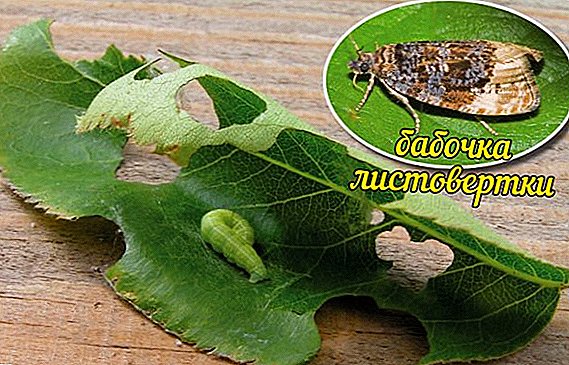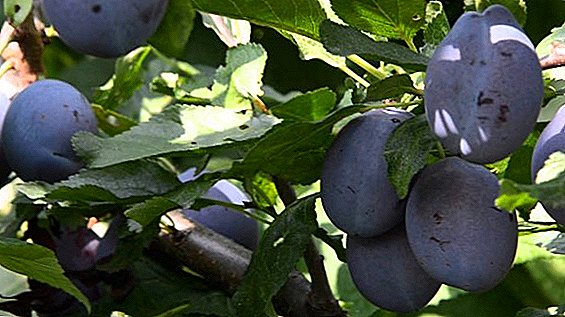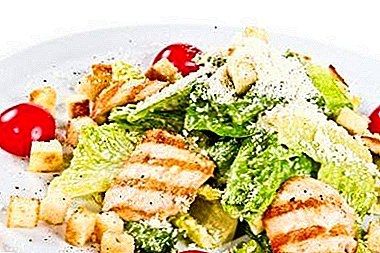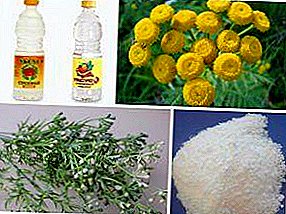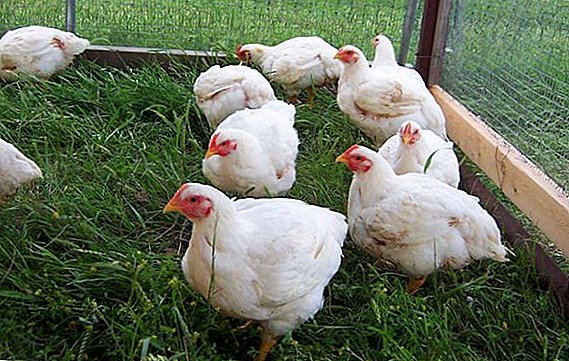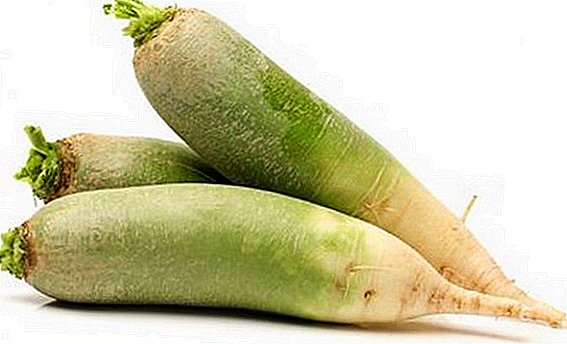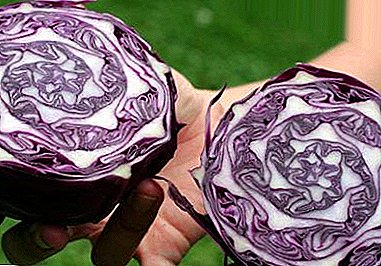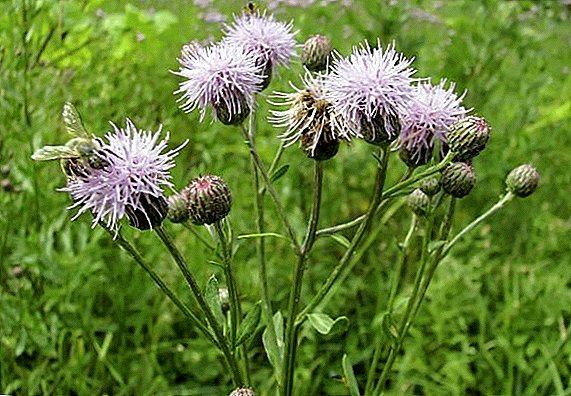 Weeds, with which the owners of gardens, flower beds, or summer cottages constantly struggle, are often useful plants for human, long-known and well-known to traditional medicine. Today we will talk about one of these weeds - a field thistle, better known as thistle, which does not normally give cultivated plants, but is useful for treating many ailments.
Weeds, with which the owners of gardens, flower beds, or summer cottages constantly struggle, are often useful plants for human, long-known and well-known to traditional medicine. Today we will talk about one of these weeds - a field thistle, better known as thistle, which does not normally give cultivated plants, but is useful for treating many ailments.
Description
Field Thistle belongs to wild-growing perennial herbaceous plants from the Compositae family. It has thin and very long stems, which sometimes reach 1.5 m in height. The color of the stems and leaves is green with an olive sheen. The leaves of the plant are small, arranged on the stems alternately, have an oblong-lanceolate form, are distinguished by rigidity. Leaf plates have a notched-toothed or pinto-blade region, very prickly.
Did you know? In the world there are more than 300 species of plants from the genus Bodyak, most of which are distributed in Europe, North and Central America. And in Ethiopia, there is the Engler giant, the bodybuilder, which reaches 4 meters in height.
The most powerful part of the plant is the root system, which includes a long taproot and many side branches. The main root grows vertically into the ground and can reach depths in excess of 4 m.
 Weed flowers are represented by brush-shaped paniculate inflorescences, red-violet color. Weed blooms for a long period - from mid-summer to late September. After the creeper has flowered, in place of a bud a fruit appears with seeds that are scattered over a large area. They have numerous feathery hairs, which allows them to float in the air, flying away for a considerable distance.
Weed flowers are represented by brush-shaped paniculate inflorescences, red-violet color. Weed blooms for a long period - from mid-summer to late September. After the creeper has flowered, in place of a bud a fruit appears with seeds that are scattered over a large area. They have numerous feathery hairs, which allows them to float in the air, flying away for a considerable distance.
In addition, the seeds can survive in extreme natural conditions and remain viable for up to 7 years. In the fruit of one plant, up to 30 thousand seeds are concentrated, the possibility of germination of which is very high, if all the conditions for this are created.
Best of all, the creeper grows in an area that is constantly cultivated, so it spreads as quickly as possible on well-groomed and fertile soils. Weeds are exposed to fields, vegetable gardens, arable land, land for walking cattle. Often weed can be seen near the river, ditches, roads, on the meadow.
Important! Since the weed is very prolific, it can fill the entire territory and force out other plants very quickly - sometimes it takes no more than three years.
Composition
Field thistle is interesting for a person due to the presence of:
- taliacin glycoside;
- resins;
- carotene;
- choline;
- tartaric acid;
- inulin;
- flavonoids;
- tannins;
- essential oils;
- vitamin C.
 The fruit of the plant is rich in fat semi-drying oil - about 27%.
The fruit of the plant is rich in fat semi-drying oil - about 27%.The nutritional value of this weed has hardly been studied, so it is only known that the plant is very nutritious and rich in carbohydrates. Per 100 g of product accounts for about 396 kcal.
For therapeutic purposes, other weeds are also used: spurge, quinoa, ambrosia, thrown amaranth, dodder, creeping bitter.
Beneficial features
Due to the high content of nutrients, the plant is famous for the following effects:
- bactericidal;
- painkillers;
- wound healing;
- hemostatic;
- anti-inflammatory;
- sudorific.
Carotene contributes to the removal of free radicals, which subsequently reduces the risk of cancer diseases, stimulates metabolic processes in the body, slows down the aging process. Fatty acids do well with carcinogenic effects on the body, neutralizing this process.  Alkaloids stimulate the central nervous system, strengthen blood vessels, normalize blood pressure and lower body temperature. Inulin helps the body absorb vitamins and minerals, stimulates the bowels, reduces the amount of sugar in the blood.
Alkaloids stimulate the central nervous system, strengthen blood vessels, normalize blood pressure and lower body temperature. Inulin helps the body absorb vitamins and minerals, stimulates the bowels, reduces the amount of sugar in the blood.
Choline helps the body to better assimilate fats, stimulate the work of the heart and influence the improvement of the liver. Tartaric acid helps to reduce body weight due to the diuretic and laxative effects.
Application
Very often, the field thistle is the main component in the recipes of folk remedies for the treatment of various diseases. Consider separately what parts of the plant are used in the treatment, as well as the basic prescriptions of drugs.
Root
From the root prepare decoctions and infusions that help in the treatment of diseases of the gastrointestinal tract, colic, kidney problems.
With colic or abdominal pain, rheumatism, gout, a decoction is prepared from crushed field thistle root. For this, 1 tsp. raw materials need to pour a glass of water and boil for 10 minutes. Leave the agent for 2 minutes to infuse, then strain and use 1 tbsp. l 5 times a day before meals in 30 minutes.  Broth well treats toothache. To do this, rinse your mouth with warm water 5 times a day.
Broth well treats toothache. To do this, rinse your mouth with warm water 5 times a day.
The same decoction can be used as compresses for the treatment of varicose veins and thrombophlebitis. Moistened in broth bandage or gauze, folded several times, is applied to problem areas 3 times a day.
Learn how to use Kalanchoe and Maclura to treat varicose veins.
The powder of the root of the crap is effective in the treatment of bruises, bruises, hematomas. For this 2 tsp. powder stir in 1 tsp. water and apply the resulting slurry on the problem area for 20 minutes. Repeat the procedure 2-3 times a day.
Externally, the root of the thistle is used to treat problems with the skin, accompanied by boils, abscesses, wounds, ulcers, inflammations.
Inflorescences
Inflorescences help fight neuroses and cancer cells, preventing them from progressing.
In the treatment of malignant neoplasms can help decoction of inflorescences of the thistle. For this you need 1 tbsp. l dry raw materials pour a glass of water and boil for 10 minutes, then insist 1 hour, strain and use 100 ml three times a day, regardless of the meal.  For the treatment of neurosis inflorescences prepare infusions. For medication, you must use 1 tbsp. l raw materials and a glass of boiled water, insist 4 hours. Before taking, strain and use 1 tbsp. l three times a day before meals for 30 minutes.
For the treatment of neurosis inflorescences prepare infusions. For medication, you must use 1 tbsp. l raw materials and a glass of boiled water, insist 4 hours. Before taking, strain and use 1 tbsp. l three times a day before meals for 30 minutes.
Stems and leaves
The above-ground part of the plant (in folk recipes it is usually called "grass"), in dried or fresh form, is used in the treatment of problems associated with the appearance of wounds, boils, abscesses, tumors, hemorrhoidal bumps. Herbal decoctions help to cope with intestinal, renal, hepatic colic, gout and rheumatism, remove excess fluid from the body during edema. It also helps a decoction in the treatment of headaches, problems with blood vessels.
For the treatment of hemorrhoids recommend poultice with grass thistle: 3 tbsp. l Raw materials wrapped in a sterile bandage, scalded with boiling water and used as lotions to hemorrhoidal foci. The same lotion can be made to treat boils and abscesses.
For the treatment of hemorrhoids use lungwort, dogwood, red rowan, black nightshade, orchis.
To treat problems with blood vessels, it is recommended to prepare a decoction from the grass of the crap. For this, 1 tsp. boiled in 200 ml of liquid for 10 minutes. Use must be filtered three times a day and 1 tbsp. l before meals for 30 minutes 
Did you know? During the Great Patriotic War, the USSR People's Commissariat of Defense, Bodyac, was approved as a food product in the diet of field troops.
Harm and contraindications
The use of field thistle as a medicine is prohibited for people who suffer:
- individual intolerance of the plant;
- encephalopathy;
- myopathy;
- hypertension;
- varicose veins.
Since the field thistle contains a small amount of toxic substances, when using a plant in large volumes, signs of toxic effects on the body can occur, which are accompanied by symptoms of ordinary poisoning.  Among the particularly serious side effects are the development of tachycardia and hypertension, as well as the formation of blood clots.
Among the particularly serious side effects are the development of tachycardia and hypertension, as well as the formation of blood clots.
Therefore, in order not to harm the health of the treatment with the help of a thistle, it is recommended to take into account the peculiarities of your body and consult a qualified specialist before using the medicine.
Stocking
The field thistle is not recognized by official medicine as a medicinal plant, therefore it is impossible to buy raw materials for the preparation of medicines at the pharmacy. To use the plant for medicinal purposes, you need to harvest it yourself, so you need to work out information about the time of collection, the parts of the plant that are used for treatment, as well as the characteristics of drying and storage of finished raw materials.
All parts of the plant have healing properties, but they need to be harvested and used in different ways.
The leaves and stems of the plant must be collected during the flowering period, which lasts from mid-summer to late autumn, but you need to be in time to do this until the fruits appear. To do this, using a sharp knife cut off the entire green part of the plant almost at the root. In order not to damage the skin when working with sharp weed leaves, it is recommended to use gloves.  Dry the raw material, separating the leaves from the stems, in a warm and dry room or on the street, under the cover. Grass is not recommended to grind before drying - so you can lose a lot of useful elements. It is better to grind raw materials immediately before use.
Dry the raw material, separating the leaves from the stems, in a warm and dry room or on the street, under the cover. Grass is not recommended to grind before drying - so you can lose a lot of useful elements. It is better to grind raw materials immediately before use.
As a bedding under the grass for drying, you can use regular newspapers or cotton fabric. Drying time depends on indoor conditions, the process can last from 2 to 4 weeks.
Important! It is recommended to place the grass during the drying period in the shade so that direct sunlight does not fall on the raw material, otherwise it may deteriorate.Also for drying fit electric dryers, the use of which should be carried out according to the instructions for the device.
It is necessary to dig up the roots in the autumn period, before the first frosts, when the plant has faded and seeds appeared on it. After the roots have been dug, they are thoroughly washed from the ground and cut into small pieces. Roots well dried with a paper towel are poured onto the newspaper in a single layer and placed in a warm, dry, well-ventilated room for drying. Roots dry longer than grass; during the drying process they can be mixed so that the process takes place evenly. It takes about a month.  The roots can be dried very quickly with the help of electric drying, this should be done in accordance with the instructions for the device, and the time will depend on the thickness of the root and the dryer itself.
The roots can be dried very quickly with the help of electric drying, this should be done in accordance with the instructions for the device, and the time will depend on the thickness of the root and the dryer itself.
Dried Thistle herb can be stored for 2 years. To prevent the drug from deteriorating during this time, it is recommended to use dense paper or cardboard packaging, dark glass containers, and sealed containers made of ceramics or wood.
The roots are stored longer - 3 years. For storage suitable container of dark glass, paper or cardboard.
Thus, the thistle field is a good tool for the treatment of various health problems. The main thing is to take into account the features of your body and use only proven recipes to avoid side effects. And given the prevalence of the thistle, problems finding a plant are unlikely to arise.


